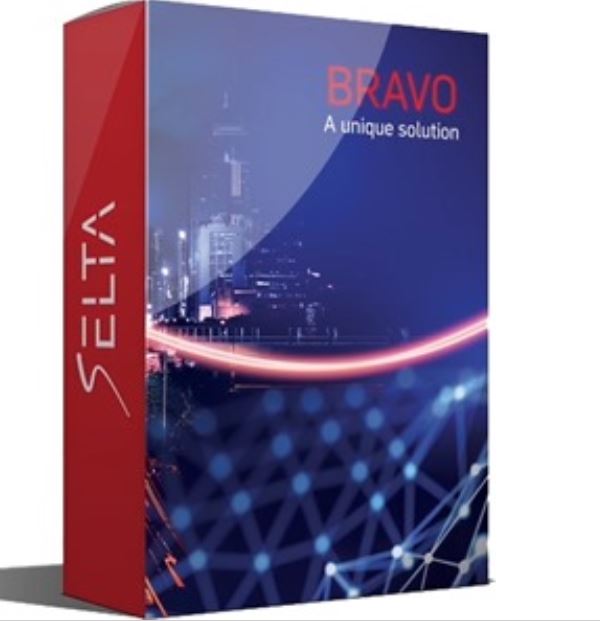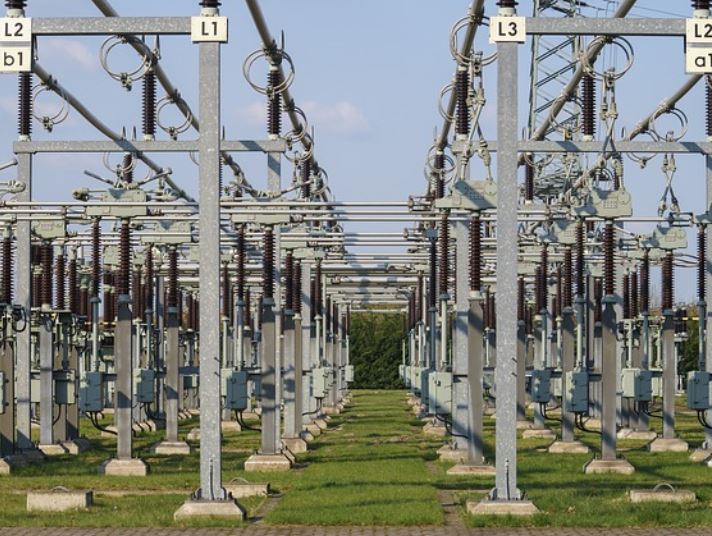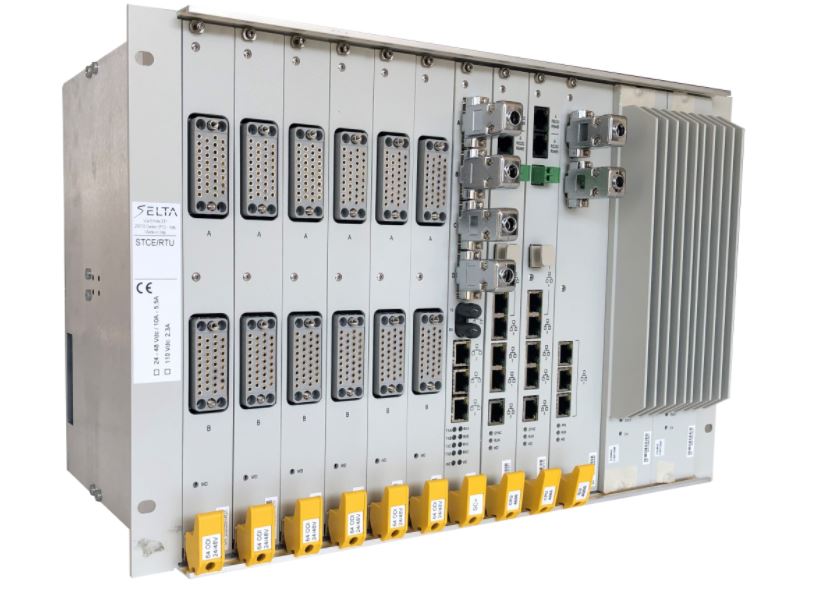- About us
- Company details
DigitalPlatforms SpA (DP) is an Italian industrial group, rapidly growing, operating in the sector of Internet of Things, Cyber and digital technologies;
DP primarily addresses critical infrastructure managers in Italy and abroad, in the energy / utilities, telecommunications, transport and defense sectors;
DP is a full liner player, present in all the elements necessary to create end-to-end IoT solutions, starting from the development, design and production of sensors and industrial electronics products, passing through command and control systems and technologies, up to IoT platforms, system integration for heterogeneous environments and cybersecurity;
The DP Group is now made up of seven companies / BUs.
The transition to electric mobility, buildings and cities transformation into interconnected systems, energy and environmental sustainability challenges require companies and administrations to change the way they offer their services to customers and citizens.
DigitalPlatforms brings together Italian SMEs capable of designing and manufacturing the IoT and Cyber products and technologies to offer companies and administrations integrated and functional solutions, designed on the specific needs of each customer.
To date, Selta, Umpi Srl, Umpi SI, Gibiesse, El&Tec, Omicron Industriale and System Management are already part of DigitalPlatforms, and others are joining the Group.
DigitalPlatforms thus aims to become more and more the partner of companies for the innovation and infrastructures digital transformation enabled by the IoT.
DP’s mission is to provide IoT and Cyber competences, technologies, innovative solutions to the leading infrastructure players, in energy/utility, telco, transportation sectors, in Italy and abroad, in order to support their efforts to digitally transform their infrastructures.
DP aims to ensure that the ongoing digital transformation leads to the creation of safe, secure, resilient and efficient infrastructures.
Group Business Activities:
Gibiesse and EL&Tec - Design and production of electronic boards in particular SMT boards with high component density and size starting from 01005 and CPU boards, Power boards, Memory boards, Backpanel boards, Single Boards, Custom boards;
Omicron Industriale - Power stations and switchboards production for three categories of companies (Telecommunications operators, Energy distributors, Utility / Infrastructure Services);
Umpi - Advanced remote control systems for public and street lighting, automation, IoT services for the city and the citizen; Building automation systems, biometric systems and thermoscanners; Specific solutions for complex infrastructures and large plants (railways, airports, tunnels, bridges, etc.);
Umpi SI - R&D on order in particular new platforms development for the creation of open systems that can be integrated with new technologies and custom products development in the IoT / Domotics sectors;
System Management - Business consulting and process integration,ICT / IOT infrastructure, Big Data Analytics and informative system, SaaS services and User Experience;
Selta (DP's BU) - Automation and control systems for electricity and gas networks, solutions for enterprise networking, cloud communication, smart working, Cyber Security with Defence focus, Evaluation Security laboratories according to the Common Criteria Standard, Test report Tempest measures execution for Authorities.
Year of establishment:
2020
Number of employees:
FROM 100 TO 499 EMPLOYEES
Annual turnover:
over 25 milion Euro
Reference year of turnover:
2023
Export turnover:
From 5 to 15 million Euro
Activities:
Manufacture of computers and peripheral equipment
Manufacture of other communication equipment
Manufacture of electricity distribution and control apparatus
Electrical, plumbing and other construction installation activities
Computer consultancy and computer facilities management activities
- Contact Information
- Business Proposals
Company:
DIGITALPLATFORMS SPA
Web site:
Address:
Via Andrea Noale 351
City:
ROMA (RM)
Zip Code:
00155
E-commerce:
Social media:
Tag:
No business proposals uploaded
- Map
Minos System and Ermes System for Smart Cities: Remote management systems of public and private outdoor lighting

MINOS SYSTEM
Cities, railway stations, motorways, airports, ports, car parks, sports facilities. Where there is a lighting network and a light point Minos System can create savings, efficiency and new services, guaranteeing, in any application sphere, maximum compatibility with the existing technical reality.
Minos System is the system that radically change the management and the use of public and external lighting network.
Thanks to the installation of the Syra module in series with the power supply line, Minos System constantly monitors every lighting point of the lighting system.
In this way it is possible to monitor the lamp operating status h24 and to detect any anomalies or faults in detail.
Through the use of PLC (power line communication) technique, Minos System communicates with the single lamp using the existing electrical grid, without having to add new and expensive wiring. The system can thus decide in a flexible way, in which area and at what time to send commands to the lighting point for switching on, off or reducing the luminous flux, as well as receiving information on the status of the lamp. The use of PLC technology has several advantages such as:
- an always present and fast connection;
- a lower sensitivity to external disturbances;
- the ability to manage up to more than 1,000 devices with a single concentrator;
- the absence of electromagnetic pollution (present instead in the case of radio systems);
- the possibility of reaching isolated sites (but equipped with electricity supply) where the installation of other technologies is difficult.
ERMES SYSTEM
Ermes System is the latest product in the Smart Cities line that has allowed Umpi (DP Group's company) to integrate its historical and authoritative leadership on the powerline with radio / wireless technology (LoRa, NB IoT) in order to offer its customers the best of both technologies.
Thanks to its innovative technological solutions, Ermes System transforms public lighting systems into the most extensive communication network in the urban and suburban area.
Through the radio transmission technique use, Ermes System communicates with the single lamp post, without having to add new and expensive wiring. The system can thus decide flexibly, in which zone and, at what time, to send commands to the light point for switching on, off or reducing the luminous flux, in addition to receiving information on the lamp status. The advantages of using radio technology are:
- the possibility of using radio technology on systems that are not fully managed (only a few lamps in the plant can be equipped with a remote control system);
- the possibility of managing different systems with a single concentrator;
- a standardized protocol, which allows interoperability between different systems;
- the possibility of integrating battery measurement systems.
Web site
https://www.umpi.it/minos-system/
Cybersecurity: DP a recognized leader in the protection of information

DP is organized with a business unit dedicated to ICT security activities. The experience and international certifications in this area make the company recognized at national level as a reference point for defense institutions and bodies. The services offered range from design, installation and maintenance to safety assessments. In addition SELTA produces systems and peripherals based on TEMPEST protocol.
SERVICES OFFERED: protecting information and veryfing security
- Design and security of networks and data centers
- Information security assessment in design e deployment of workstations
- Design and implementation of classified data networks
- Design and implementation of critical infrastructures (I and II Class reserved area, shielding, CIS areas)
- Deployment and maintenance of Tempest Hardware e Peripherals
- Support in the drawing up of preparatory documentation for the approval of the areas (physical risk analysis, CIS risk analysis, internal safety regulation, COMSEC plans)
- Customized software development
- PNRM project development
- Vulnerability Assessment and Penetration Test
- Test report Tempest measures execution for Authorities
LVS AND CE.VA LABS
DP has an exclusive laboratory dedicated to cybersecurity, accredited in a “civil” setting by OCSI as a Formal Information Security Assessment Laboratory (LVS) and accredited in a “military / governmental” setting by DIS / UCS as an Information Security Assessment Center ( CE.VA.) according to the Common Criteria (ISO / IEC 15408), the standard underlying the release by OCSI and DIS / UCSe of internationally recognized certifications:
- formal assessment according to the Common Criteria (ISO / IEC 15408) of the security of ICT systems / products and protection profiles, aimed at obtaining certification by OCSI / DIS / UCSE and internationally recognized;
- support to companies in the definition of Security Targets or Protection Profiles compliant with Common Criteria requirements;
- assistance to companies during the certification process of ICT systems / products in the context of assessments aimed at obtaining Common Criteria certifications (ISO / IEC 15408).
Bravo: Unified Communications and Smart Working solution

BRAVO is an innovative Unified Communications and Smart Working solution based on the concept of virtualization of IT resources. Its native modules manage UCC applications such as videoconferencing and fixed/mobile integration services. BRAVO platform has been designed with a high intrinsic level of IT security and is completely based on the concept of customer-centricity. The customer has at his disposal communications tools and services and efficient management of devices and people connected to the network.
BRAVO can be implemented in various scenarios, from single-branch and distributed private organizations to Telco and ISPs data centers, to provide services in as-a-service model. The multi-tenant architecture fully supports the needs of operators allowing them to serve multiple customers on a single platform, maximizing IT resources and ensuring the highest quality services.
Among the main benefits there are:
- Centralized communication and management of network devices
- Multi-tenant on-premise and cloud architecture
- Simple and fast implementation
- Costs optimization
- Vertical applications
- Customer engagement
- Flexible business model
- Scalable growth
- Salesforces ubiquity
- Team engagement
TECHNICAL FEATURES:
- Unified messaging: CTI integration (fax, sms, voicemail)
- Unified Presence: One presence/ One number for all the devices (all ringing)
- LDAP integration: shared address book (Exchange, Office 365)
- Call services (all devices): booking, waiting, transfer, answering, voicemail, call log
- Conferencing
- Video Call
- Fixed-Mobile convergence: VoIP calls via Android / iOS smartphone
- Fixed-Mobile convergence: active call transfer on all devices with a clic
- Fixed-Mobile convergence: caller view
- Fixed-Mobile convergence: manual handover from WLAN to GSM
- Fixed-Mobile convergence: H.264 video call
- Real-time collaboration
- Multi-channel web call center
- Back-to-back services
- Linux Server, Apache http/https Web Server
- Hot Redundancy / Disaster Recovery Plan
Automation of high and very high voltage substations.

Integrated system for the automation of high and very high voltage substations capable of guaranteeing complete control, automation, protection, monitoring and maintenance functions. The system uses the bay units installed at the electrical stalls for their command and control, the remote terminal units to manage the automation of the substation, the bay monitoring units for monitoring, the SCADA software and, finally, the network nodes to ensure the application redundancy.
BAY UNIT: command and control of the electricity network stall
The bay units are devices designed to carry out all the command and control functions of a stall in the electricity grid station. They interface to the station devices both through local (LAN) network and through I/O interfaces.
SA100 (Bay Control Unit) and SA200 (Bay Monitoring Unit) are the electronic units, Bay Unit, belonging to the STCE family for substation automation. They are installed at the electrical stalls, are interconnected via optical LAN controlled by a station computer, and represent the ideal system for operators of high and very high voltage electricity networks, who need to renew the control and automation systems of the stations in order to maximize the efficiency and quality of the service offered.
SA100 and SA200 systems grants:
- a unique, scalable and easily extensible architecture based on the concept of interoperability between the various control, monitoring and protection units;
- the automation, both centralized and distributed on the various stalls, no longer built with electromechanical relays but via software with standard IEC 61131 interface;
- a 100 Mbit / s Ethernet standard station LAN with a single IEC 61850 standard protocol (client and server) which enables interoperability between the stall units and the protection relays, allowing the evolution over time of the individual systems or the integration with third-party systems the integration of protections and IED devices equipped with standard buses or proprietary serial and parallel interfaces;
- the synchronization of the entire system via GPS receiver, transmitted to the stall units through an optical network, independent from the station LAN, based on the IRIG-B and NTP protocols;
- an easy and safety plant configuration through station workstations;
- the simple insertion of the station automation system into the hierarchically competent telecontrol network, with standard IEC 60870 protocols (101 client and 104 client) and with free access to all the information and functionalities necessary for optimizing the electricity network and its maintenance;
- complete command and control of a stall.
SOFTWARE: plant supervision and automation platform
Software platform for the construction of supervision, control and automation centers, capable of transferring, processing, archiving information in a simple way and generating automatic intervention procedures.
SCADA EXPERT
eXPert realizes supervision, control and automation centres for networks managed by utilities, integrating all the most advanced SCADA features in a single environment. A distributed and open architecture, the possibility to choose the number of stations according to the type of application and to use processors with different technology keeping full compatibility with programs and interfaces, besides the ability to be configured according plant and man/machine interface types, makes it the ideal solution for geographically distributed networks.
eXPert is a sophisticated supervision tool, which is able not only to easily transfer, process and store information, but also to create automatic procedures, to develop specific application functionalities, and to integrate itself with the corporate information networks or with Internet or intranet
eXPert is a scalable platform allowing to carry out supervision and remote control systems for small, medium and large networks.
STCE-RTU 4K - high security and performance remote control unit

Efficient management of electrical networks requires that the remote control peripheral equipment manage information from and to the controlled plant in an integrated way with the other plant devices, communicate with management centers in a quick and secure manner, and ensure high level of security in configuration, maintenance and access to recorded data.
STCE-RTU 4k, like all remote contriol units belonging to STCE-RTU series, guarantee high processing and communication capacity, modular architecture with distributed intelligence for an optimized deployment, high capability in chronological discrimination and synchronization with high precision clocks, advanced configuration and diagnostic tools for simple, timely, effective and secure maintenance interventions, high levels of security and information protection to reduce the vulnerability and risk of cyber attacks (Cyber Security). STCE-RTU 4k is also used, besides electrical networks, in the control of other types of geographically distributed plants such as gas pipelines, oil pipelines, water treatment and district heating plants in concentrated, distributed and mixed architectures.
MONITORING AND CONTROL: signals, measures and pulses acquisition; commands and set-points; filters, thresholds and scale factors programming; concentration of information coming from local or remote devices; time stamp assignment with 1 ms resolution; automation logics; MQTT Publisher/Subscriber protocol for IoT applications; client-based requirements applications; Terna BDE; power supply, CPU and communication boards redundancy.
COMMUNICATIONS: dialogue with multiple control centers and more IP address per center; telecontrol protocols IEC 60870-5-101/104, IEC 61850, IEC 62351-3, MQTT; 4 redundancy group for IEC 60870-5-104 protocol towards the same center; redundancy bonding; multi-protocol gateway mode; proxy mode.
SECURITY: security based on HTTPS, Radius, SSH; network management SNMP V.3 with USM authetication; SysLog for the remote control of all security information relating to the device; Security Log for tracing access; Brute Force Attack functionality; NTPv4 authenticated synchronization.
CONFIGURATION AND MAINTENANCE: SSH and HTTPS secure access; application for rapid and controlled configuration of communication parameters and plant interfaces; run-time checks for errors and inconsistencies; I/O and communication units interchangeable without the need for configuration; web-based access to default data, field events log, diagnostic, security events and run-time display of I/O status and alarms with configurable display filters; firmware download/upload, device configuration and automation available via web encrypted communication (anti-tampering); to failures. Net recorder funzionality for trafic logging; dedicated memory for recordings; licenses management.
LOCAL AUTOMATION: simulation and execution of automation sequences compliant with the IEC 61131-3 standard using the programming languages: IL (Instruction List), LD (Ladder Diagram), FBD (Function Block Diagram), ST ( Structured Text) and CFC (Continuous Function Chart). A software programming simulator allows the testing of implemented logics. STCE-RTU also allows online analysis of the automation operating status, manual shutdown and start of the automation (via software), automatic restart of the automation each time the device is switched on.
TECHNICAL FEATURES:
- dual core ARM Cortex a7 32bit
- 1 Ethernet ports 10/100 BaseT RJ45 (service)
- 2 Ethernet ports 10/100/1000 BaseT RJ45 / 1 port 100BaseFX SFP (alternative)
- 2 serial ports RS232/RS485
- 2 Ethernet ports 10/100 BaseT RJ45
- Storage: 8 GB integrated memory


